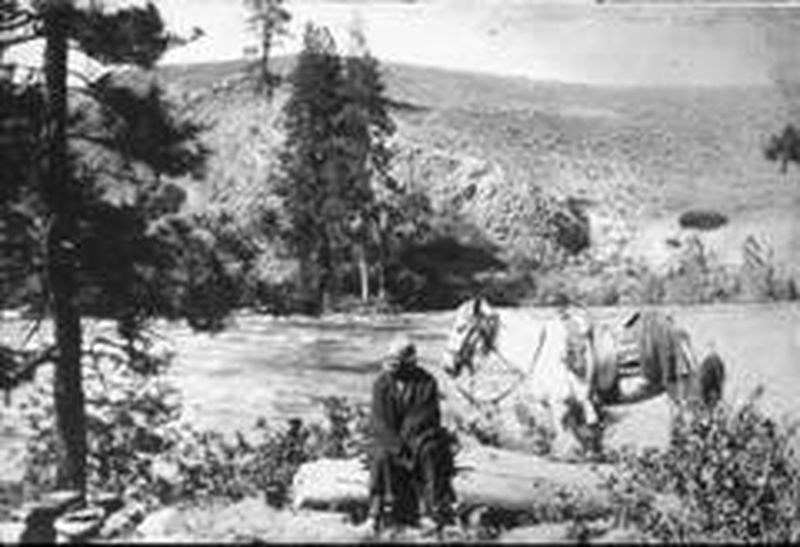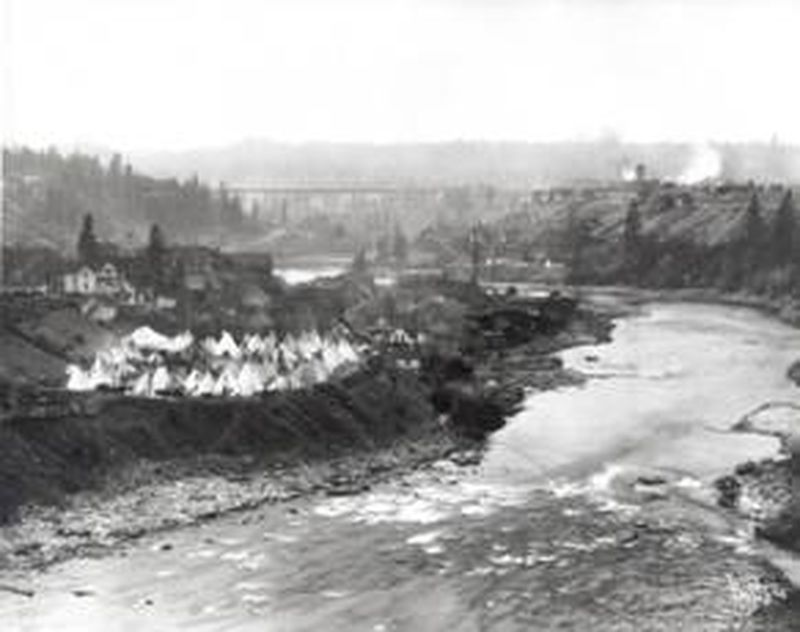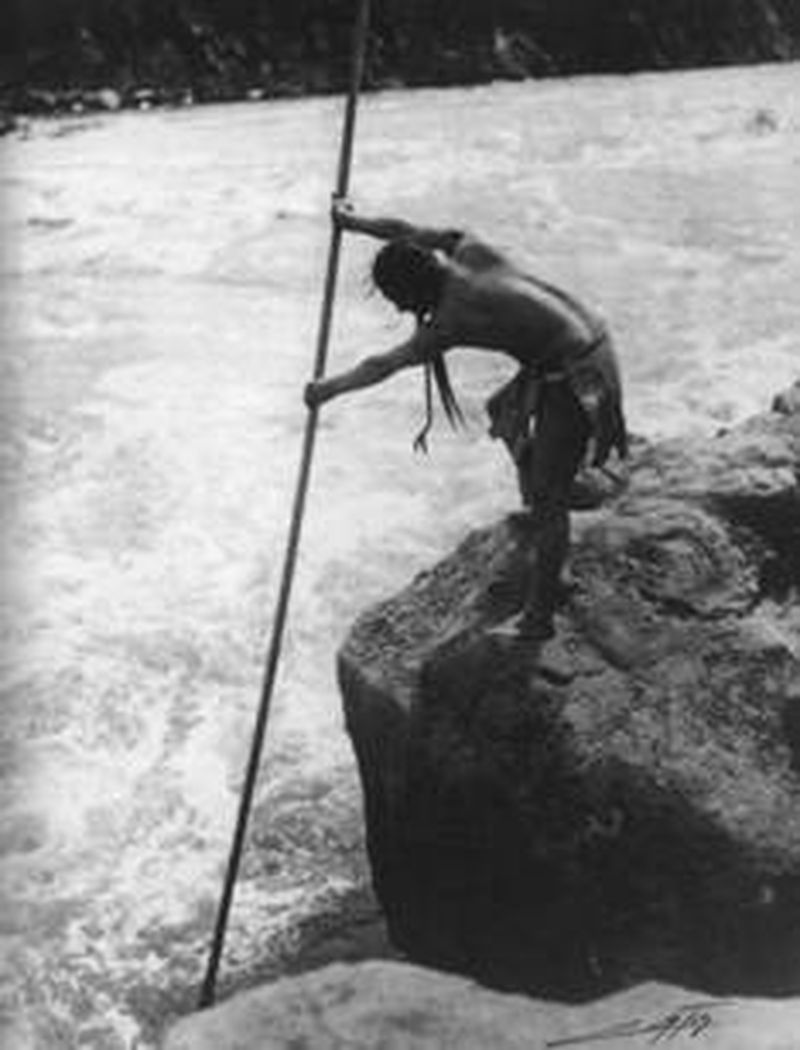Tribal History

Chief Garry ("Spokan Garry" ca. 1811 - 1892), was a Native American leader of the Middle Spokane tribe, acting as a liaison between white settlers and tribes in the area. In his later years, Garry lived in and near the Spokane River Gorge, photographed here with the north bank (now Kendall Yards) in the distance. (Eastern Washington State Historical Society)

Chief Garry ("Spokan Garry" ca. 1811 - 1892), was a Native American leader of the Middle Spokane tribe, acting as a liaison between white settlers and tribes in the area. In his later years, Garry lived in and near the Spokane River Gorge, photographed here with the north bank (now Kendall Yards) in the distance. (Eastern Washington State Historical Society)
For thousands of years, the river and falls were a gathering place for native peoples and source of sustenance to them, particularly in the form the salmon that ran up as far as the Spokane Falls and into the river’s tributaries. Native mythology ties humans to this place from the beginning of creation, though archeologists have evidence of human habitation reaching nearly to the end of the last Ice Age some 15,000 years ago.
Successive waves of inhabitants developed one strand of what anthropologists call Columbia Plateau Culture, including the Spokane Tribe. Three major Spokane groups lived along the river – the Lower Spokanes, near the river’s connection with the Columbia River, and two other bands, the Middle and Upper Spokanes, who occupied lands along shorelines and tributaries as far as Lake Coeur d’Alene.
The Spokanes and other regional tribes gathered along the river annually to fish for salmon, a staple of their diet. They fished in several locations, including the Little Falls downstream near the Columbia; near the outflow of the Little Spokane River; at the mouth of Latah (Hangman) creek; and the Lower Spokane Falls, the last point at which the salmon could travel on the river. Debbie Finley, historian and member of the Colville Tribe, wrote in a 1995 Spokesman-Review article that between 200 and 5,000 Indians gathered near the falls every year for the salmon harvest.
The lower falls and gorge are still considered sacred to the Spokane Tribe. To this day, regional tribes gather every year near the falls (the Spokane Pow-Wow) to celebrate their traditional and contemporary culture.

In 1925, the first national Indian Congress was held in Spokane, atop fill forming today’s Glover Field. Development of the Peaceful Valley neighborhood, regrading of both north and southern shorelines, and the Union Pacific rail bridge ("High Bridge") are visible beyond. (Eastern Washington State Historical Society)

Native American spear fisherman